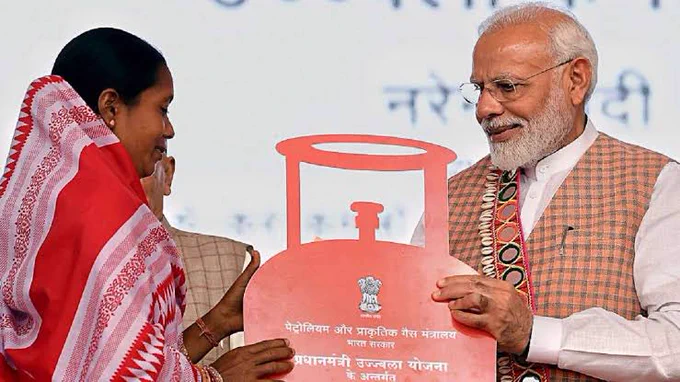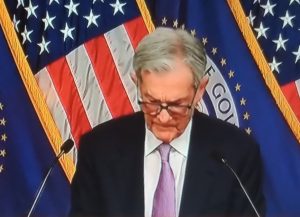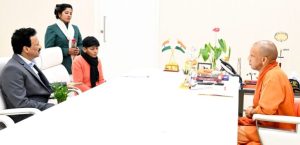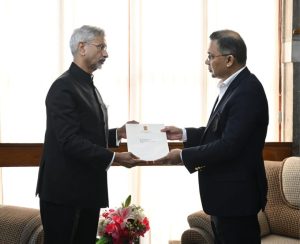Ujjwala Scheme builds case for continuity for rural poor beyond elections

PM narendra Modi with Ujjwala scheme beneficiary
By Baijayanti Rout
The Pradhan Mantri Ujjwala Yojana (PMUY) was launched in 2016 with the objective of delivering LPG to 80 million below-poverty-line families by 2020 (up from 50 million). PMUY is in charge of India’s national LPG programme and has attracted significant international interest. However, since the late 2000s, the Government of India has been promoting the use of LPG by expanding accessibility and cutting costs.
The government’s main proposal credits the subsidy directly to qualifying beneficiaries’ bank accounts. The Cabinet Committee on Economic Affairs announced a home LPG subsidy of up to 12 refills per year in March of this year. A budget of Rs 6,100 crore has been set aside for fiscal year 2022-23, and Rs 7,680 crore has been set up for fiscal year 2023-24.
According to the centre, this subsidy has been provided by Public Sector Oil Marketing Companies such as Indian Oil Corporation Ltd. (IOCL), Bharat Petroleum Corporation Ltd. (BPCL), and Hindustan Petroleum Corporation Ltd. (HPCL) starting May 22, 2022. In March 2023, the cabinet committee extended the PMUY subsidy of Rs 200 per LPG cylinder for a year.
The Rajiv Gandhi Grameen LPG Vitrak initiative was created in 2009 to boost LPG distribution in distant regions by improving LPG coverage and offering a one-time incentive for new LPG connections to low-income families. The Direct Benefit Transfer for LPG, devised a method in 2015 to immediately deposit the difference between the market and subsidised cost of cylinder refills into participants’ bank accounts, allowing for a more flexible and efficient subsidy transfer system.
In 2016, rural LPG distribution was improved once again by boosting the dependability of cylinder refill supplies and adopting direct house refill deliveries. During the same year, the ‘Give it up’ programme enlisted almost 10 million LPG users to voluntarily quit their subsidy and transfer it to low-income households.
Aside from the affordability issue, experts conclude that there is a need to go beyond in-come when evaluating the reasons inhibiting energy transitions. Because of their taste preferences, individuals prefer to cook their meals using traditional fuels. As a result, despite having access to fuels, individuals do not completely reject solid fuels.
However, the Cabinet Committee on Economic Affairs, presided over by Prime Minister Narendra Modi, increased the existing subsidy for Ujjwala scheme recipients by Rs 200, bringing the total subsidy per cylinder to Rs 400. According to Thakur, new connections under the subsidy plan would be absolutely free. Central minister Anurag Thakur stated that the government will shoulder the higher LPG subsidy cost in FY24, which is estimated to be Rs 7,680 crore. This event occurs at a time when home LPG cylinders cost Rs 1,103 per unit.
Following the purchase of cylinders, the subsidy is credited to the bank accounts of qualifying recipients. This subsidy will help one-third of the country’s total LPG subscribers. However, the steep increase in worldwide LPG costs caused by different geopolitical factors was inhibiting the use of cooking gas. As a result of Tuesday’s (29th august, 2023) decision, the LPG subsidy allocation for fiscal 2023-24 is expected to be enhanced.
The provision of LPG subsidies to rural impoverished groups is a welcoming step by the central Government. However, we expect that it should continue for a long period rather only till the election.






